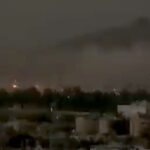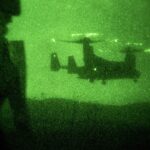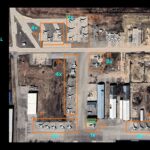The U.S. Navy interdicted an illicit shipment of advanced Iranian-made weapons and weapon components headed for Yemen in the Arabian Sea, on February 9, 2020. The discovery was made by the crew of USS Normandy (CG 60), a Ticonderoga-class guided-missile cruiser. The CG 60 launched a search party that boarded the stateless dhow and found a cache of weapons. The maritime security operation was conducted under international law.
The weapons seized from the dhow consist of:
- 150 “Dehlavieh” missiles, which are the Iranian version of the Russian-made “Kornet” anti-tank missiles;
- Three unidentified Iranian-made surface-to-air missiles;
- Thermal imaging scopes;
- Components of manned and unmanned aerial systems and surface vessels;
- Munition;
- Other weapon parts.
PHOTOS from the @USNavy operation that interdicted an illicit shipment of Iranian weapons to #Yemen, on Feb. 9, 2020.
-150 “#Dehlavieh” missiles, which are the Iranian version of the Russian-made “#Kornet” ATGM;
-3 Iranian-made SAMs;
-Thermal imaging scopes;
-other components. pic.twitter.com/AJg1X6908G— T-Intelligence (@T_intell) February 14, 2020
Many of these weapons systems are identical to the advanced weapons and weapon components seized by the guided-missile destroyer USS Forrest Sherman (DDG 98) in the Arabian Sea on Nov. 25, 2019. Those weapons were determined to be of Iranian origin and assessed to be destined for the “Ansar Allah” militia (the Houthis) in Yemen, which would be in violation of a UN Security Council Resolution 2216 that prohibits the direct or indirect supply, sale, or transfer of weapons to the Houthis. The same resolution encourages all states to inspect the sea and air cargo to Yemen.
The seized weapons are in U.S. custody awaiting final disposition. The assessment of the material will be an interagency and international effort. International partner nations and organizations have also been invited to inspect the cache.
Not today 💪
USS Normandy Seizes Illegal Weapons in Arabian Sea
Read Now:https://t.co/yQTl8AWBC9 pic.twitter.com/YYEPHy0APu
— U.S. Navy (@USNavy) February 14, 2020
IRANIAN WEAPONS SMUGGLING OPERATION IN YEMEN
Since the Yemeni civil war began in 2015, the Iranian Revolutionary Guards Corps’ external operations branch, the Quds Force (IRGC-QF), has illegally transferred large quantities of weapons to Houthi rebels. Tehran’s giveaways include Borkan ballistic missiles (derivative of Iran’s “Qi’am”), “Quds” cruise missiles (derivative of Iran’s “Ya-Ali”), the Iranian-made Sayyad 2-C surface-to-air missile, expandable-unmanned aerial vehicles and thousands of assault rifles, rocket-propelled grenades, and rockets. Iran uses small, low-visibility and elusive vessels, such as fishing boats and dhows, to freight weapons into Yemen. Sometimes the small vessels use ship-to-ship transfers to move or distribute cargo along the way. The U.S. Navy has periodically intercepted illicit weapons shipments in the Arabian Sea. However, the number of weapons interdicted represents a tiny fraction of the overall illicit seaborne cargo outbound from Iran.
The Houthi has used these capabilities to attack petrochemical facilities, military installations and urban centers deep inside the Kingdom of Saudi Arabia (KSA) and the United Arab Emirates in the past years. The Houthis also attacked oil tankers transiting the Bab el-Mandeb strait and the Red Sea. Similar to the “Hezbollah model”, the Iranian support for Houthi has transformed the irregular militia into a hybrid force armed with advanced weaponry. A strong Houthi enables Iran to attack targets deep in the KSA and the Red Sea and to open a second front in case of a direct conflict with Riyadh.
Waging war on the KSA is only one of Iran’s two strategic interests in Yemen. As part of its maritime strategy, Iran aims to control the two main checkpoints vital for international maritime shipping. Iran already controls the main one, the Hormuz strait, due to its territorial boundaries. But control over the second one, the Bab-el-Mandeb strait, requires ashore dominance in Yemen. However, the Houthi only control Yemen’s western seaboard. An intervention by the UAE in 2015 managed to deny the Houthi and al-Qa’ida control over Yemen’s main ports in the south, Aden and Mukalla.
Iran proved that it is willing to go beyond rhetoric in 2019 when the IRGC covertly attacked the Emirati port of Fujairah, oil refineries in KSA, and oil tankers in the Strait of Hormuz, causing chaos on the oil market and temporarily disrupting international sea trade.
- Russia Bombs Maternity Ward & Children’s Hospital in Mariupol As Part of Siege - 10 March 2022
- T-Intell’s OSINT Training Marks One Year Anniversary - 18 November 2021
- IS-K Never Left the Battlefield - 27 August 2021






